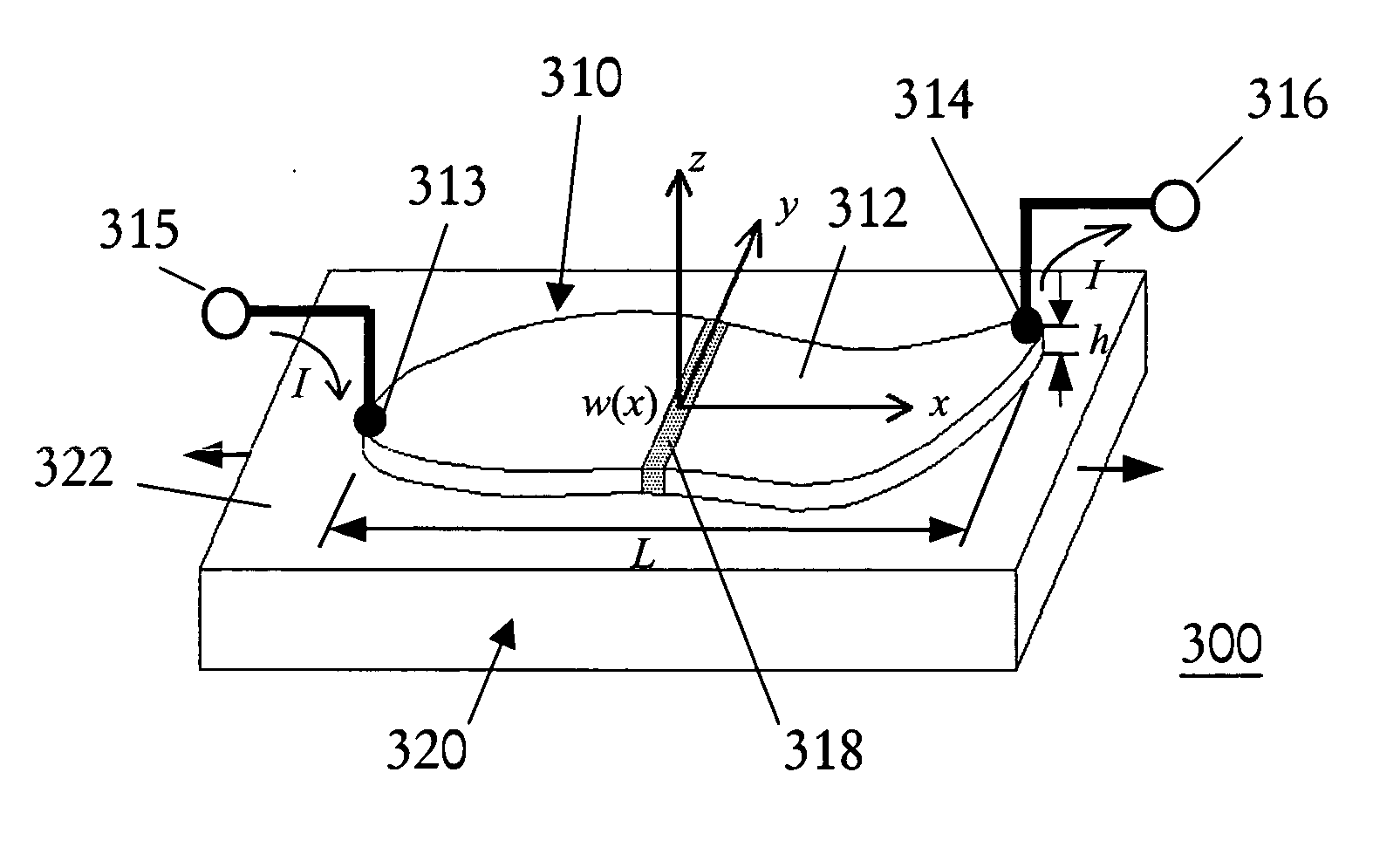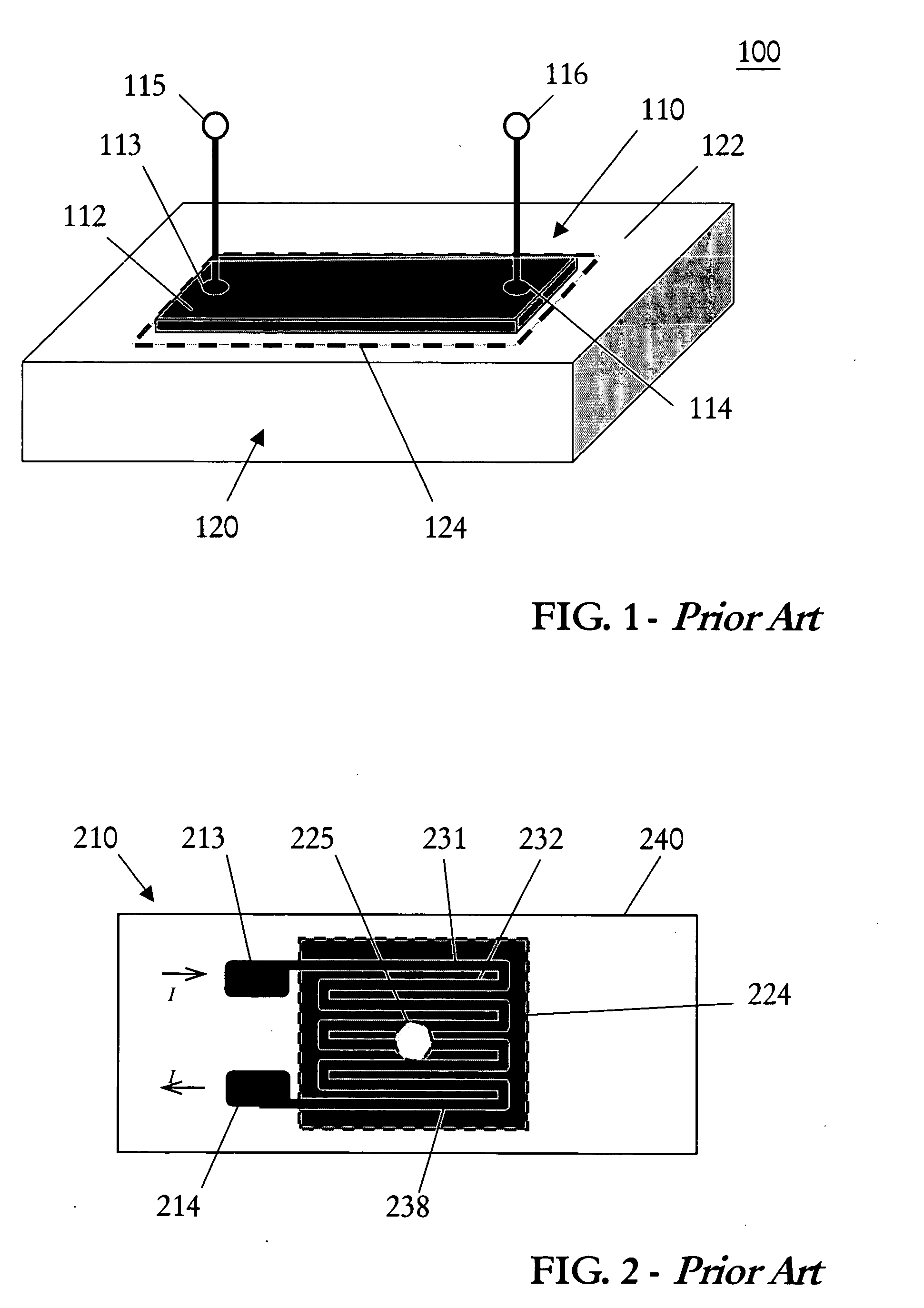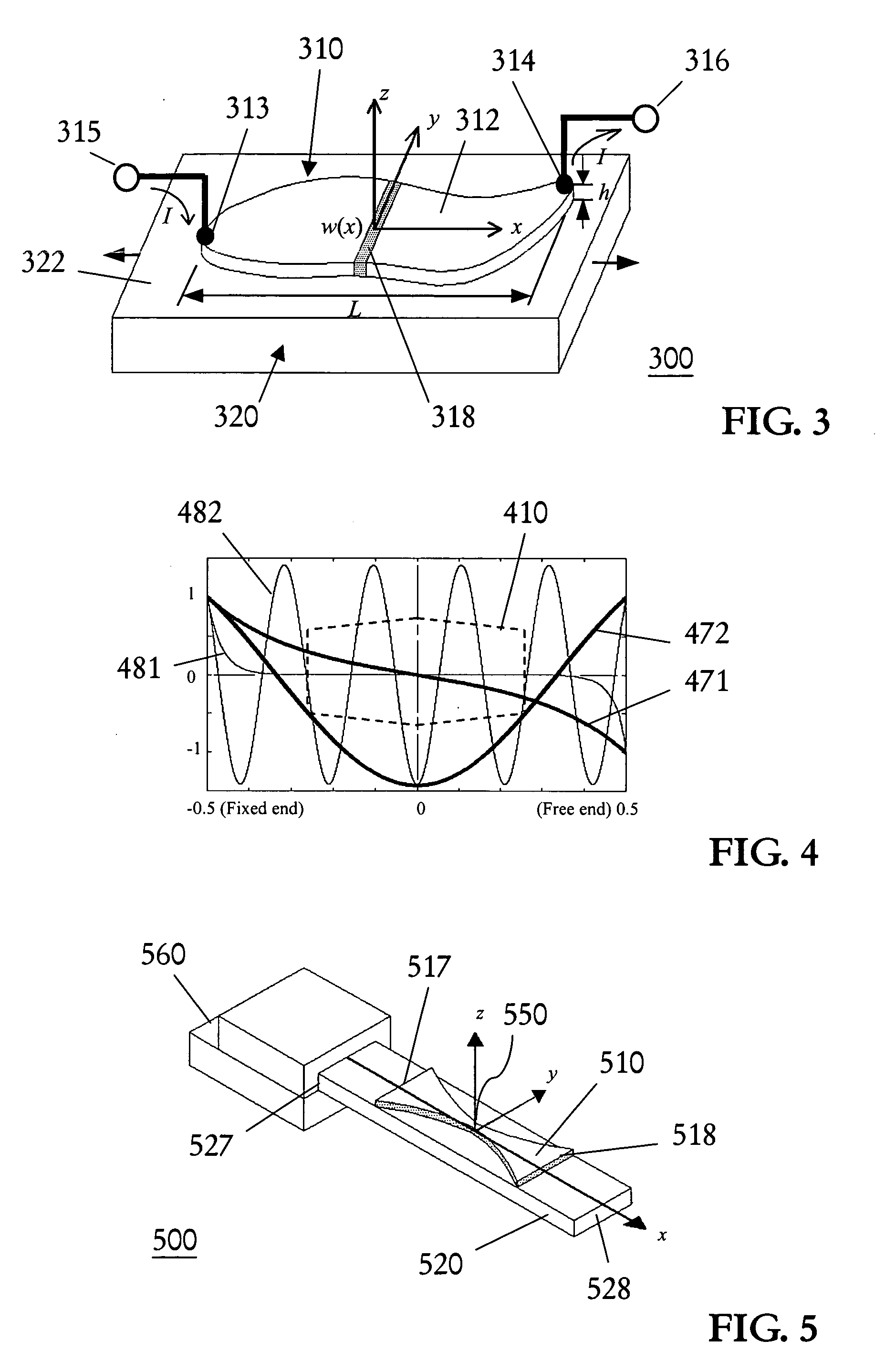Strain gauge apparatus having a point-distributed sensor
a technology of point distribution and strain gauge, which is applied in the field of strain gauge, can solve the problems of deteriorating accuracy of measurement, resistance measured in high-order resonance mode, and not being a proper representative of the true mechanical strain at the center point of the strain gaug
- Summary
- Abstract
- Description
- Claims
- Application Information
AI Technical Summary
Benefits of technology
Problems solved by technology
Method used
Image
Examples
Embodiment Construction
[0049] Any mathematical function can be expressed as a superposition of an even function and an odd function. The strain distribution of any deformation arising in an examined structure, when described with a mathematical function in a model such as illustrated in FIG. 3 and described above, can be one such function. Thus, the strain distribution ε(x) of a structure deformed under mechanical stress becomes
ε(x)=εε(x)+εo(x) (11)
where εe(x) and εo(x), respectively, are the even and odd components of the mathematical system.
[0050] In accordance with the underlying mathematical conception of the present invention, the surface integral obtained by performing surface integration in the spatial domain can be resolved into a specific solution that facilitates a no-phase-delay low-pass filter into the transfer function of the sensor output. The idea can be outlined in the following expression
R(x)ε(x)dx=R(x)[εe(x)+ε0(x)]dx, (12)
wherein R(x) is the effective surface electrode acting as...
PUM
 Login to View More
Login to View More Abstract
Description
Claims
Application Information
 Login to View More
Login to View More - R&D
- Intellectual Property
- Life Sciences
- Materials
- Tech Scout
- Unparalleled Data Quality
- Higher Quality Content
- 60% Fewer Hallucinations
Browse by: Latest US Patents, China's latest patents, Technical Efficacy Thesaurus, Application Domain, Technology Topic, Popular Technical Reports.
© 2025 PatSnap. All rights reserved.Legal|Privacy policy|Modern Slavery Act Transparency Statement|Sitemap|About US| Contact US: help@patsnap.com



